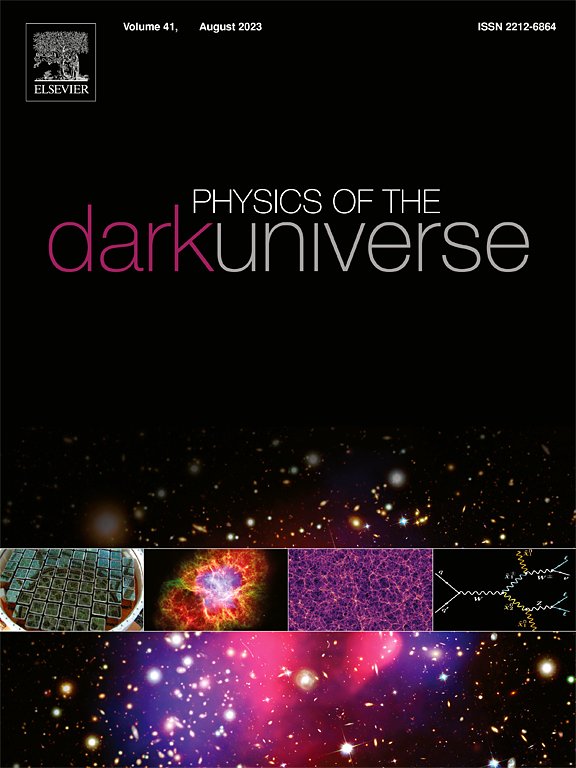Probing signals of self-interacting dark matter core collapse in Hi-rich galaxies
IF 5
2区 物理与天体物理
Q1 ASTRONOMY & ASTROPHYSICS
引用次数: 0
Abstract
We analyze rotation curves of five Hi-rich galaxies recently discovered with MeerKAT. These galaxies exhibit sharply rising rotation curves, while their baryonic components are not dynamically dominant, suggesting that their dark matter halos have high inner densities. When fitting the standard Navarro–Frenk–White (NFW) halo model, four galaxies require extremely high halo concentrations, exceeding the cosmological median by . In contrast, self-interacting dark matter (SIDM) halos in the core-collapse phase naturally account for the high densities in these galaxies. For halos with masses around , those in cosmic filaments exhibit concentrations consistent with the cosmological average, while halos in cosmic nodes show relatively higher concentrations that align with the SIDM fits but remain insufficient for the NFW fits. Our analysis indicates that these Hi-rich galaxies may have formed in cosmic nodes of dark matter with significant self-interactions.
探测富hi星系中自相互作用暗物质核心坍缩的信号
我们用MeerKAT分析了最近发现的5个高富集星系的旋转曲线。这些星系表现出急剧上升的旋转曲线,而它们的重子成分并不是动态的主导,这表明它们的暗物质晕具有很高的内部密度。当拟合标准的纳瓦罗-弗兰克-怀特(NFW)晕模型时,四个星系需要极高的晕浓度,超过了宇宙中值5σ。相反,自相互作用暗物质(SIDM)晕在核心坍缩阶段自然地解释了这些星系的高密度。对于质量在1011M⊙左右的光晕,宇宙细丝中的光晕的浓度与宇宙平均浓度一致,而宇宙节点中的光晕的浓度相对较高,符合SIDM拟合,但仍不足以满足NFW拟合。我们的分析表明,这些富含高质量的星系可能是在暗物质的宇宙节点中形成的,具有显著的自相互作用。
本文章由计算机程序翻译,如有差异,请以英文原文为准。
求助全文
约1分钟内获得全文
求助全文
来源期刊

Physics of the Dark Universe
ASTRONOMY & ASTROPHYSICS-
CiteScore
9.60
自引率
7.30%
发文量
118
审稿时长
61 days
期刊介绍:
Physics of the Dark Universe is an innovative online-only journal that offers rapid publication of peer-reviewed, original research articles considered of high scientific impact.
The journal is focused on the understanding of Dark Matter, Dark Energy, Early Universe, gravitational waves and neutrinos, covering all theoretical, experimental and phenomenological aspects.
 求助内容:
求助内容: 应助结果提醒方式:
应助结果提醒方式:


